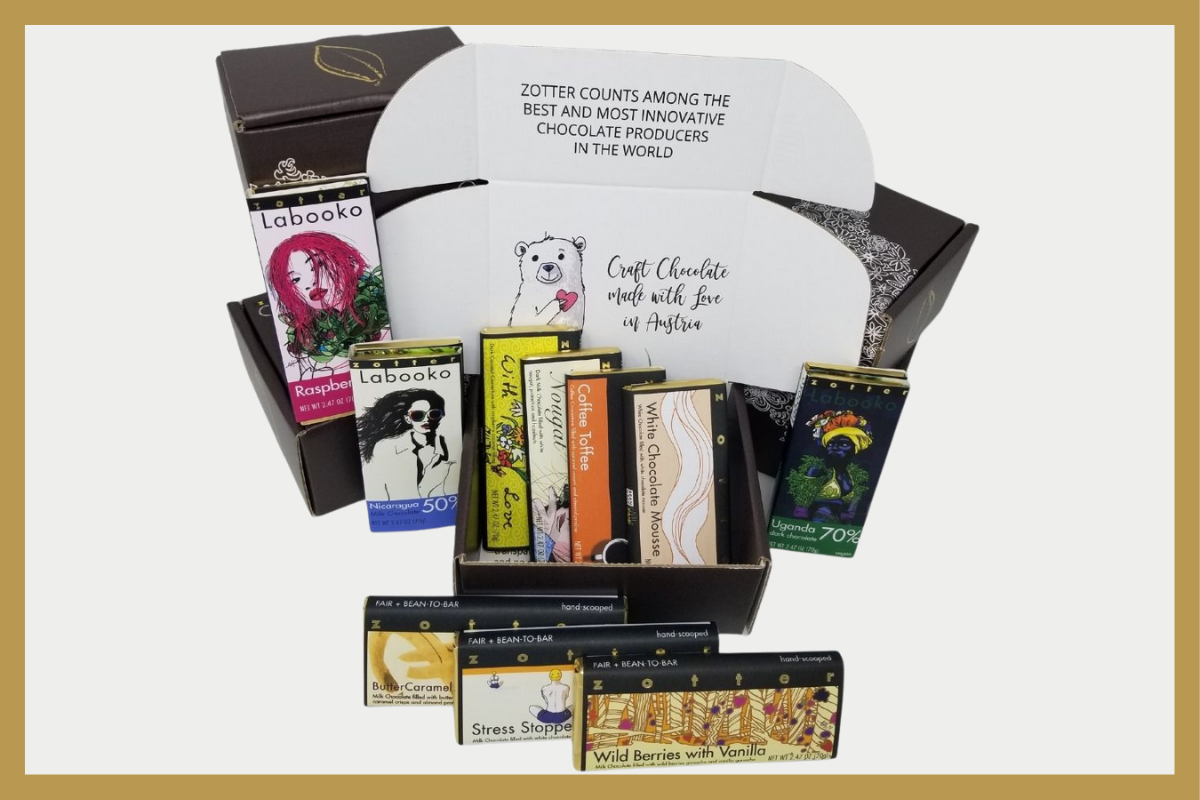The world of chocolate is as diverse and complex as the flavor itself. For centuries, chocolate has been more than a mere sweet treat, it’s been entwined in the narratives of discovery, culture, and even global economy.
From the Mayans who first crushed cocoa beans to create a bitter, spicy drink, to the bars that line our supermarket shelves, chocolate has always been a storyteller. In recent years, however, there’s been a growing excitement around a particular kind of chocolate—single-origin chocolate.
But what’s the big deal? Why is this culinary trend captivating chocolate connoisseurs and novices alike, and how does it differ from the chocolate we’ve come to know?
The Essence of Single-Origin Chocolate
Single-origin chocolate is just as it sounds—a product made from the beans of a single type of cacao, grown in a single region. It’s this fundamental singularity that sets it apart from regular chocolate, which may contain a blend of beans from various areas, one that marries the delicate dance of cocoa and sugar.
Single-origin chocolate is often labeled with the specific country or even the exact estate from which its beans hail.
But why are we increasingly drawn to this chocolate’s purity? The core answer lies in the depth of flavor that it offers. By keeping the bean source intact and unblinded, single-origin chocolate allows consumers to taste the nuanced palette of flavors that cacao can offer, much like one might savor a fine wine or appreciate a premium coffee.
Each bite becomes an adventure, a sensorial tour of the terroir—the specific environment in which the cacao is grown.
The Role of Terroir in Chocolate
Terroir—a term often associated with wine—is central to the appeal of single-origin chocolate. Like the grapes used in winemaking, the cacao beans’ flavors are heavily influenced by the soil, climate, and microclimate of the region.
The altitude, rainfall, and even the flora that surrounds the cacao trees play a vital role in shaping the beans’ taste. From the fruitier notes of beans grown in Madagascar to the earthy undertones of those from Ecuador, the chocolate mirrors the character of its originating land.
This regional specificity is not just a marketing ploy; it’s a celebration of diversity and a connection to the source. Single-origin chocolate encourages a deeper appreciation of the craft and the connection between the growers and the consumers. It’s as much about the flavor as it is about the stories embedded in each bar.
The Experience of Tasting Single-Origin Chocolate
Tasting single-origin chocolate can be an education in itself. Akin to a guided tour, each bar leads you through the tasting notes, reflecting the unique characteristics of the region. Flavors might range from the tropical, fruity tang of South American cacao to the nutty, mellow richness of West African beans.
These experiences not only vary from bar to bar but can differ significantly from one harvest to the next, just as vintage affects the taste of wine.
A Guide to Tasting Single-Origin Chocolate
When tasting single-origin chocolate, one is advised to use the same approach as when sampling fine wines. It’s all about engaging your senses and taking note of the subtle details.
- Sight: Examine the chocolate’s appearance. Notice its color and sheen. A smudged chocolate may indicate poor craftsmanship or storage, while a rich, dark brown color could suggest a high cocoa content.
- Touch: Feel the chocolate’s texture. Quality chocolate should be smooth and free from imperfections. It should melt on the tongue, not crumble.
- Smell: Bring the chocolate to your nose and inhale. Does it have an intense aroma? Earthy, floral, or fruity scents might be present, offering a preview of the taste experience.
- Taste: Place a small piece on your tongue and allow it to melt slowly. Note the various flavors that emerge. Breathe in through your mouth to fully experience the taste profile.
- Finish: After swallowing, notice the lingering aftertaste. Does it leave a pleasant, lasting impression?
The Impact of Single-Origin Chocolate on Communities
Beyond the pleasurable experience it offers, single-origin chocolate is also a force for good. By focusing on specific regions, consumers are indirectly supporting the communities that produce these beans.
The demand for single-origin chocolate has led to a greater emphasis on fair and sustainable trade practices. Farmers are often paid higher prices for their premium beans, which, in turn, can lead to better living conditions and a higher standard of living.
How Single-Origin Chocolate Supports Sustainability
Many single-origin chocolate brands take pride in their commitment to ethical sourcing. They often have direct relationships with cacao farmers, ensuring not only fair wages but also quality control and sustainable farming practices.
These partnerships can include initiatives like reforestation, which safeguards the cacao ecosystem, and educational programs that empower local farmers with knowledge and resources to improve their practices and yields.
Investing in the preservation of these regions is critical to the long-term availability of high-quality cacao. It’s a model where everybody wins—the growers, the environment, and, of course, the chocolate lovers.
The Artisanal Movement of Single-Origin Chocolate
Another reason for the rise of single-origin chocolate is its association with the artisanal and craft food movements.
Just as with craft beer and small-batch coffee, single-origin chocolate is celebrated for its attention to detail, quality, and the story behind it. It’s a response to the monolithic nature of the mass-produced candy industry, where uniformity and quantity are the priorities.
The Craftsmanship of Single-Origin Chocolate
Chocolate makers who specialize in single-origin bars are often artisans in the truest sense, fusing the roles of artist and scientist. They meticulously roast, grind, and temper the beans, carefully controlling the process to bring out the best of the cacao’s character. Each step is crucial and can influence the final product.
These makers are also innovators, always seeking new ways to express the flavors of their cacao. They experiment with different roasting times and temperatures, conching methods, and even aging techniques, pushing the boundaries of what single-origin chocolate can be.
Single-Origin Chocolate in the Culinary World
The rise of single-origin chocolate isn’t confined to the bar. It has extended its influence into the world of high-end cuisine, where chefs are using it as a premium ingredient. Just as with wine, chocolate is finding its way into sophisticated dishes, where its flavor can complement and enhance other ingredients.
The Versatility of Single-Origin Chocolate
Single-origin chocolate can be used in a multitude of ways, from simple desserts to complex savory dishes. It can be grated over a creamy soup, incorporated into a rich mole sauce, or used to create a decadent mousse. The possibilities are as rich and diverse as the chocolate itself.
Chefs are also exploring the terroir of chocolate, pairing specific regions with specific foods to create harmonious flavor profiles. It’s a blending of tradition and innovation that’s expanding the utility of chocolate in the culinary arts.
The Future of Single-Origin Chocolate
With all its growing popularity, could single-origin chocolate be a passing fad, or does it have staying power? The answer lies in our palate. Single-origin chocolate has carved a niche for itself in the market, and the community around it continues to grow.
The Sustained Allure of Single-Origin Chocolate
The allure of single-origin chocolate isn’t just about taste; it’s about story and connection. In an age where the origin of our food is increasingly important and the desire for authentic experiences continues to rise, single-origin chocolate satisfies on multiple levels.
The future seems bright for single-origin chocolate. With a growing focus on transparency, sustainability, and consumer education, it’s poised to not just remain a niche market but to continue to grow and perhaps even influence the chocolate industry at large.
In conclusion, single-origin chocolate is more than just a trend; it’s a testament to the richness and diversity of our world. It’s a reminder that with every indulgence, we have the opportunity to support livelihoods, preserve ecosystems, and celebrate the craftsmanship that transforms a simple bean into a delectable treat.
Each bar of single-origin chocolate is a testament to the potential for a more connected and conscientious approach to luxury, one that’s as good for the soul as it is for the taste buds.
About Zotter Chocolates
Embark on a sensory journey with Zotter Chocolates, where every piece is a testament to the soulful essence of Bean-To-Bar, organic, and fair trade practices. Savor the results of 30+ years of passionate craftsmanship, as each bite whispers tales from Austria’s heartlands.
Let the unique and distinct flavors of our chocolates embrace your senses, reminding you of the love and dedication poured into every piece. Our diverse range boasts approximately 170 different varieties, offering something to satisfy every palate.
Will your next favorite be the hand-scooped chocolates or perhaps the Currant’N’Chili, with its unexpected yet harmonious fusion of flavors? Or will you be drawn to the exquisite dark, single-origin Labooko bar, a true purist’s delight? Join us in the pursuit of chocolate perfection, where every piece is a piece of joy, waiting to be discovered.

